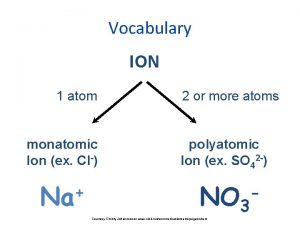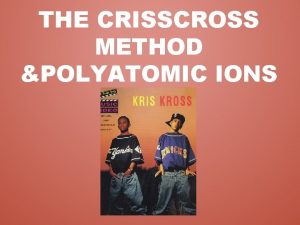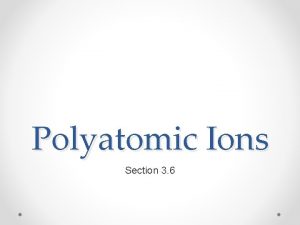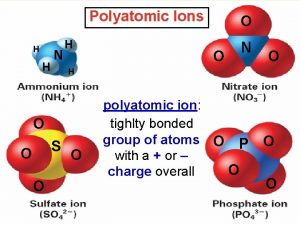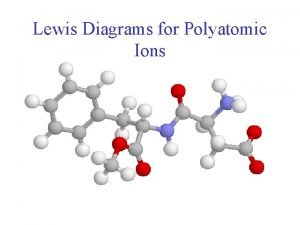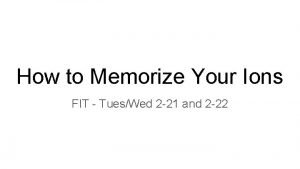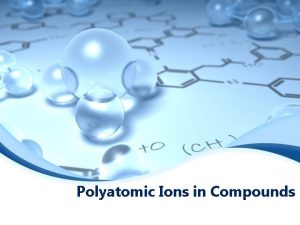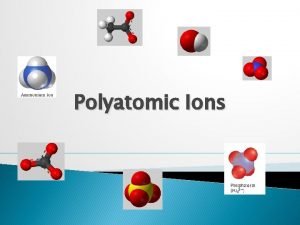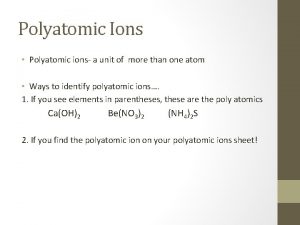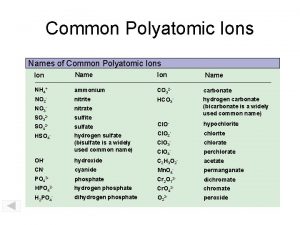Polyatomic Ions One more to throw in the








- Slides: 8

Polyatomic Ions One more to throw in the mix 1

What are Polyatomic Ions? • They are charged molecules AKA • Ions made up of more than one type of atom Regular ion: [Na]+ Example Polyatomic ion: [NH 4]+ • They have an electric charge • They cannot exist on their own 2

Who cares? • Polyatomic ions are the basic building blocks of so many ionic compounds • They will be on your government exam 3

Memorization? • No! That’d be silly. But look at them often enough to become familiar with them • Look on pg. 192 in your text to see a list of common PA ions Example: • Ammonium (NH 4)+ • When reacted with Cl- it become ammonium chloride, a flavouring agent in liquorish 4

Formula from the Name - Polyatomic Example: manganese (III) chlorate 1. Figure out what these two ions are and what their charges are • manganese (III) is Mn 3+ • chlorate is Cl. O 3 - 2. Figure out how many you need of each so that the positive charge and negative charge balance out to zero • Mn has a + 3 charge • Cl. O 3 has a -1 charge so 1 Mn = +3 and 3 Cl. O 3 = -3 0 3. List the two ions in the order they are named. Put brackets around any ions where there are more than one of them • Mn(Cl. O 3) 4. Indicate how many ions are present in a subscript, right after the brackets • Mn(Cl. O 3)3 5

Example: Ammonium Sulfate 1. Figure out what the two ions are and what their charges are 1. NH 4+ SO 42 - 2. Figure out how many of each ion you need to balance the positive and negative ions out to zero 1. NH 4+ : +1 +1 = +2 (2 NH 4 ions) SO 42 - : -2 = -2 (1 SO 4 ion) BAM !!! 3. List the two ions in the order that they are named. Put brackets around any ions where there are more than one of them involved 1. (NH 4)(SO 4) 4. Indicate how many of each ion are present in the compound as a subscript right beside the ion (just outside of the brackets) 1. (NH 4)2 SO 4 6

Writing the name for a compound with a PA ion in it 1. Figure out what the two ions are – write out their names and charges a. If they are both PA ions, then list them in the order they appear in the formula (positive ion first, negative ion second) b. If the positive ion is a multivalent ion, then figure out what charge is being used and indicate it with roman numerals c. If the negative ion is a simple non-metal, be sure to change the suffix to “ide” 7

Practice! • Flip your text books open to page 193 • Work with your table partner – one partner does a, c, e, etc. the other partner does b, d, f, etc. • When you finished, check your answers with each other first, then with the back of the text book. • Ask for help/clarification if you need it… you have a quiz next week that includes this! 8


